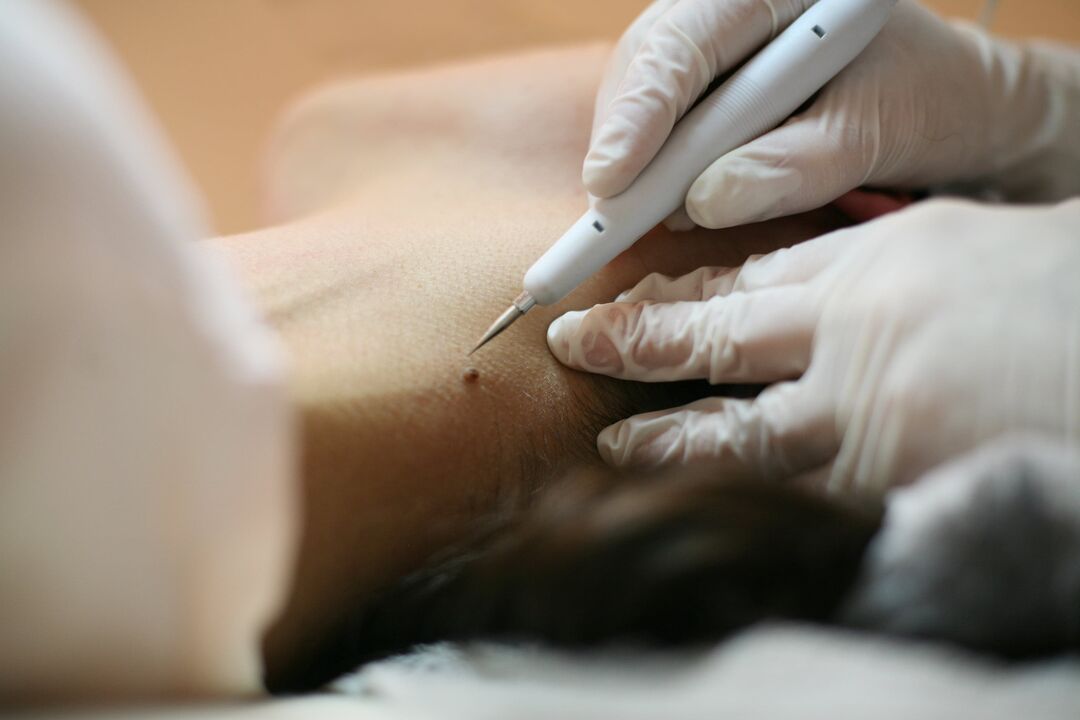Human papillomavirus (HPV) is one of the most common viral agents on Earth.

According to medical statistics, 80% to 90% of all people on the planet are carriers of HPV, many of whom are not even aware of the presence of the papilloma virus in their body. This is due to the fact that, by penetrating the patient's blood, HPV can remain dormant (inactive) for a long time, slowly affecting the basic cells of the skin, while not visually manifesting. We will try to examine the mechanisms of infection and the symptoms of the disease and also to understand how to cure the human papilloma virus quickly and effectively.
How is the human papillomavirus transmitted?
In answering the topical question of how you can become infected with the human papillomavirus, it is imperative to list the three main mechanisms by which the viral agent penetrates the body:
- Way of communication- by direct contact with the user's skin. The risk group is massage therapists, cosmetologists, dermatologists, etc.
- Mediated (household) mechanism- includes the transmission of papillomavirus through household items - towel, comb, railings of public transport, etc.
- Sexual path- Unprotected sexual intercourse with an infected person provides almost one hundred percent chance of the papillomavirus penetrating the body, while such subtypes of the factor as human papillomavirus type 31 can be transmitted to women even when using a condom.
Symptoms of human papillomavirus in men and women may not appear until certain conditions or conditions have occurred. Such factors are considered secondary causes of papillomavirus:
- Decreased immune function?
- Violation of the integrity of the skin - injuries, small cracks, scratches, wounds, etc.
- Stress and neuro-emotional overwork.
- Weakening of the body against the background of an inflammatory or infectious process.
- Hormonal disorders;
- Violations of the rules of personal hygiene.
The only sign of papillomavirus can be considered the formation of specific skin neoplasms, which are mostly benign, but require mandatory medical monitoring. In the presence of at least one of the above factors, skin growths occur within 1-6 months after the initial infection of the patient. This is how long the papillomavirus incubation period lasts.
Why are different types of human papillomaviruses dangerous?

In order to determine how to get rid of the human papillomavirus and whether it is worth taking treatment, we will understand what can be dangerous about this viral agent and how serious the consequences can be. Often people do not pay proper attention to such skin growths as papules and warts, considering them harmless defects. Only a noticeable (frontal) localization of the tumor, which brings aesthetic problems, can push the patient to visit a specialist. Meanwhile, some types of human papillomavirus are considered precancerous conditions and can turn into malignant tumors.
Modern medicine has about 120 types of papillomaviruses, which determine the location, size and oncogenicity of epidermal growth. We will try to understand which types can be considered just an aesthetic defect and which require immediate treatment:
- Papilloma virus 1, 2, 4 types.The viral factor leads to the formation of plantar warts, which can develop over time and spread to healthy tissues, making it difficult for the patient to move.
- Papillomavirus 2, 4, 26, 27, 29, 57 types.It causes the formation of common or vulgar warts, which most often affect the skin of the hands.
- Papillomavirus 3, 10, 28, 49 types.It is the main reason for the appearance of flat warts, which most often affect children and adolescents, for whom they received the second name - youth.
- HPV type 7.It forms special papules on the hands of an infected person, which are called "butcher's warts".
- Papillomavirus 2, 3, 5, 8-10, 12, 14, 15, 17, 19, 20, 36, 37, 46, 47 and 50 types.A numerous group of viral agents that cause veruciform epidermoplasia, while being extremely benign formations.
- Human papillomavirus 6 and 11, as well as 42 and 54 types.A more dangerous group of HPV, which forms genital warts on the genitals and mucous membranes. Such growths may undergo malignant metamorphosis.
- Papillomavirus 16, 18 and most subtypes 30-67 types.This group of viral agents has a high level of oncogenicity, which is manifested in relation to the internal genitals. Thus, the papilloma virus type 33 in women, as well as the papilloma virus type 18 cause the formation of flat warts and cervical dysplasia, which can lead to cervical cancer.
- Papillomavirus type 51, as well as types 45, 52, 54, 56, 66, 68.Human papillomavirus type 52 and other aggressive agents of this group can cause cervical or vaginal cancer, as well as oncology of the external genitalia and anus.
It should be understood that these are not all subtypes of HPV known in the art, but the varieties listed above can certainly be attributed to the most common.
How to identify human papillomavirus in women and the stronger sex?
Diagnosis is a mandatory step for a visit to a doctor in case of formation of papules on the skin or mucous membranes. This is due to the risk of confusing the papilloma with another skin problem. While in most cases it is asymptomatic, the human papillomavirus in women is often detected only by a scheduled or otherwise triggered gynecological examination.
Skin growths can be differentiated by a simple examination, which is confirmed by microscopic analysis of epithelial scrapings. At the same time, the final diagnosis can be made only after diagnostic PCR, which makes it possible to detect the presence of the papilloma virus in the patient's blood. If malignant papillae of the genitals are suspected, an additional test - tissue biopsy - is often prescribed.
Human papillomavirus - treatment
When answering the question of how to cure papillomavirus, we must first assume that simply removing a skin tumor does not solve the problem once and for all, as the viral agent remains in the blood. Unfortunately, to date, medicine has not developed an effective method for the complete cleansing of the human body from the virus, however, the strengthening of immunity and rational hygienic care do not allow HPV to multiply actively and be accompanied by the formation of skin defects. .
There are two main directions for removing papillae of different localization:
- Treatment of human papillomavirus with folk remedies.
- Removal of benign tumors with material.
Treatment of papillomavirus with folk remedies
Folk recipes suggest the use of fresh celandine juice, as well as solutions of iodine and vinegar as agents that burn the nipples. Such methods are based on a simple application of an agent to a tumor with subsequent rejection. We must remember that this practice is of limited effectiveness and can lead to scarring or scarring. A milder option is to regularly apply a clove of garlic to the protruding skin, which may not offer the desired result, but it will certainly not harm the patient's health.
The use of decoctions and herbal teas such as wormwood, dandelion, tricolor violet, etc. , allows you to boost your immune system and provide physical resistance to HPV. The treatment of human papillomavirus at home can also be done with the help of special ointments, creams and pharmacy patches.
How to treat human papillomas with material methods

Modern medicine offers many effective material options for a patient to get rid of the papilloma virus, however, laser destruction of tumors is considered the "gold standard" in this regard. The method is effective, painless and simple. The treatment lasts only a few minutes without affecting the surrounding skin structures. This approach will not only protect the patient from unwanted scars and scars, but also significantly reduce the chance of recurrence.
The multidisciplinary clinic offers its clients laser papilloma and wart removal of any location using the most modern medical equipment. The qualifications of our specialists are complemented by many years of experience and individual approach to each client.














































































